

| The Ivy Bee (Colletes hederae) in Nottinghamshire |
| Its always exciting when
the northerly spread of a species newly arrived into the
UK, eventually means that after a number of years, its
northerly progress has brought it to within a short
flight of Nottinghamshire. Such an event has to be one
attraction as to why many naturalists are drawn to
recording invertebrates. In much the same manner as all moth trappers hope for a long distance migrant (and they all do) looking out for and finding a species in Nottinghamshire after its UK arrival, has to be another. Some species take longer to reach us than others and their spread up through the UK can sometimes be astonishingly rapid, as in the case of the Harlequin Ladybird and Western Conifer Seed Bug. The Ivy Bee Colletes hederae (Schmidt & Westrich, 1993) is also one of our more recent colonisers, one of at least another twelve species which have expanded their way onto the county's fauna list. |
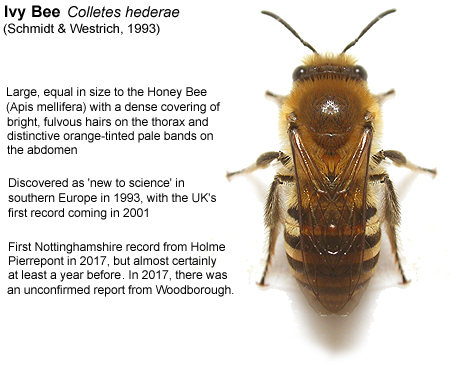 |
| .... | ||
| UK
arrival of Colletes hederae
and the spread north to Nottinghamshire This very distinctive solitary bee, was first recorded in Dorset back in 2001. This in turn, coming only eight years after being discovered 'new to science' in southern Europe in 1993. Its arrival at the Nottinghamshire Wildlife Trust's Skylarks Reserve at Holme Pierrepont (per Adrian Dutton), came after a steadier northward range expansion than some other newly arrived species. The most recent species we know of and the number of years it took them to reach Nottinghamshire, are shown in the table further below. |
||
| .... |
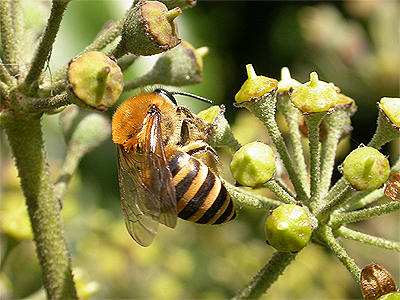 |
Colletes hederae
was recorded at Holme Pierrepont by Adrian Dutton in
2017, after he had been alerted to the bee's presence by
the NWT's reserves manager of the time, who believed that
it had been present there since 2016. In all probablility, C. hederae had certainly arrived a year or two earlier than that, most likely in 2014 or 2015 in our view, which would have coincided with its quickening range expansion north through the UK. When we visited the Skylarks Reserve in 2018, we found C. hederae to be much more numerous than we had expected it to be. After its Dorset arrival back in 2001, several years of further colonisation of new areas and consolidation of previously colonised areas took place. There were new records from along the south coast and by 2009, there were the first records from north of the River Thames. By 2011, it was reported from inland south of Oxford and there were the first ever records from Wales. |
|
| .... | ||
| Fig 01. Invasive/introduced and natural range expanding species and their arrivals in Nottinghamshire | ||||||||||
| .. | ||||||||||
| Order | Species | First UK record | First Nottinghamshire record | Difference | ||||||
| (Arachnida) | Leiobunum sp. A | Notts 2009 | Worksop 2009 | .. 0 years | ||||||
| (Coleoptera) | Harmonia axyridis | Harlequin Ladybird | Essex 2004 | Eakring 2006 | .+2 years | |||||
| (Hemiptera) | Leptoglossus occidentalis | Western Conifer Seed Bug | Dorset 2007 | Eakring 2009 | .+2 years | |||||
| (Lepidoptera) | Cameraria ohridella | Horse Chestnut Leaf Miner | London 2002 | Mansfield Woodhouse 2007 | .+5 years | |||||
| (Orthoptera) | Meconema meridionale | Southern Oak Bush Cricket | Berks 2001 | Bilborough 2007 | .+6 years | |||||
| (Coleoptera) | Pachyrhinus lethierryi | Essex 2003 | Worksop 2010 | .+7 years | ||||||
| (Odonata) | Erythromma viridulum | Small Red-eyed Damselfly | Essex 1999 | Attenborough 2006 | .+7 years | |||||
| (Hymenoptera) | Bombus hypnorum | Tree Bumble Bee | Hants 2001 | Worksop 2009 | .+8 years | |||||
| (Lepidoptera) | Cydalima perspectalis | Box-tree Moth | Kent 2007 | Bestwood Village 2018 | +11 years | |||||
| (Hemiptera) | Dicyphus escalerae | London 2007 | Mapperley 2018 | +11 years | ||||||
| (Hymenoptera) | Colletes hederae | Ivy Bee | Dorset 2001 | Holme Pierrepont 2016 | +15 years | |||||
| (Coleoptera) | Chrysolina americana | Rosemary Beetle | Surrey 1994 | Nottingham 2009 | +15 years | |||||
| (Hemiptera) | Stephanitis takeyai | Andromeda Lacebug | Berks 1998 | Attenborough 2016 | +18 years | |||||
| (Lepidoptera) | Argyresthia cupressella | Suffolk 1997 | Market Warsop 2015 | +18 years | ||||||
| The most recent C. hederae distribution map produced by BWARS, shows the spread up both eastern and western UK coasts and also inland. The bee's northerly movement to new areas inland, so far seems (as far as we know) to have missed the neighbouring counties of Derbyshire and Leicestershire, but it surely has to be present in Leicestershire, if not both counties?. It has been recorded on both the Lincolnshire and Yorkshire coasts. |
| .... | ||
| Nottinghamshire
distribution Since we first published this page on eakringbirds.com back in September 2018, a number of reports have very kindly been sent to us, showing that Colletes hederae is firmly established in the county. Confirmed sites for C. hederae to date (October 2020) now include the Nottinghamshire Wildlife Trust's Skylarks Reserve at Holme Pierrepont (per Adrian Dutton), Netherfield Lagoons in 2017 (Rob Woodward), Beeston Rylands in 2018 (Tim Sexton) and Southwell (Rob Johnson) in 2018, Gedling (Adrian Dutton) and Church Warsop. In view of these additional records in September and October 2018, the record we previously described as (unconfirmed) from Woodborough, just a few miles north-east of Nottingham in September 2017, now has to be considered extremely likely to have been this species. Woodborough lies on a clay-based soil, whilst Holme Pierrepont and the whole of the Trent Valley is very much sand and gravel. |
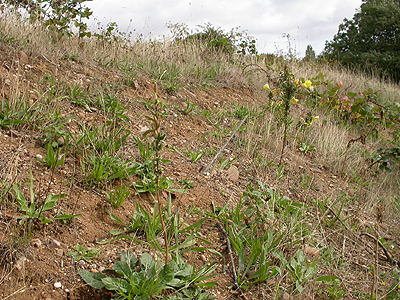 |
|
| .... | ||
| There are a number of gravel workings (past and present) lying further down the River Trent, that should ultimately provide suitable habitat for C. hederae to found new colonies. Similarly, anywhere in western Nottinghamshire, especially north of Bestwood Village, up to the Mansfield and Worksop areas, are also likely sites for further colonisation in the next few years. | ||
| .... |
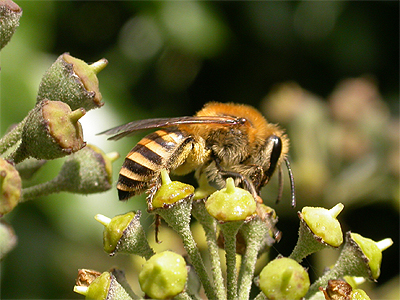 |
The bee requires areas of bare, or
sparsely vegetated areas of sandy soil for nesting and
stands of Ivy close by for pollen gathering. The presence
of Ivy seems vital for successful colonisation, as C.
hederae is almost totally reliant on it as a pollen
source. Visits to other types of flowers are very rarely
reported. When we visited Holme Pierrepont in
mid-September 2018 to look for this bee, we found females
easy to locate on the stands of Ivy in various stages of
flower, growing in a concreted area where the quarry
buildings used to be. This area is only yards from the
reserve's car park. We found males were considerably more flighty and often responsible for causing a pollen gathering female to take flight. We found more females than males at Ivy during our visit, instead recording males with greater frequency around the entrances to nest burrows, where there would often be several males waiting for females to return to their nests. The sparsely vegetated bank where nests were reported to us by Adrian in 2017 (above photograph) produced much fewer nests than expected, unless there was some degree of burrow excavation by Rabbits creating steeper areas of exposed sandy soil. |
|
| .... | ||
| Small numbers of nests were located in most areas of available bare sandy soil nearby, especially if it was steeply inclined, or vertical and several other Rabbit burrows we examined, had also provided suitable nesting sites for C. hederae. | ||
| .... | ||
| Colletes
hederae in Nottinghamshire - the first VC56
records and subsequent range expansion The first report of Colletes hederae in Nottinghamshire, not surprisingly (in view of it's southerly location in the county) came from the Nottinghamshire Wildlife Trust's Skylarks reserve at Holme Pierrepont in 2017, with good numbers noted on Ivy Hedera helix and nest burrows located nearby. But it was undoubtedly already in Nottinghamshire by 2016 and possibly even as early as 2015, based on the good numbers at Skylarks in 2017. There was a reported record from Woodborough on September 17th the same year and was reported in small numbers just up the Trent Valley at Netherfield Lagoons in 2017 and 2018, when it was also found at Southwell for the first time. |
| .... |
| Fig 02a. Colletes hederae Nottinghamshire distribution 2017 - 2020 | Fig 02b. Colletes hederae Nottinghamshire distribution 2017 - 2022 | |
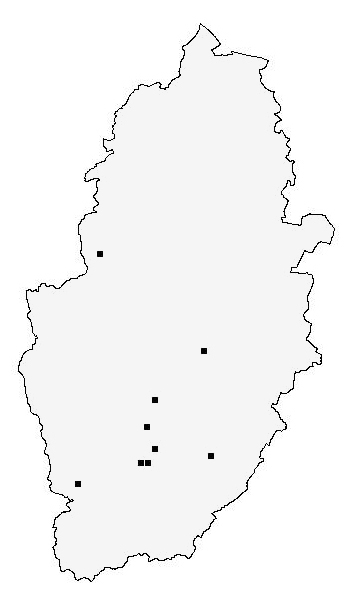 |
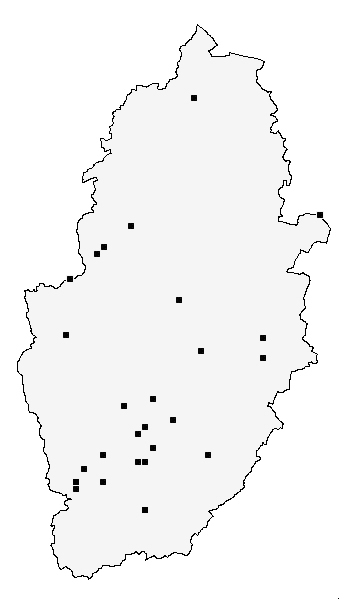 |
| .... |
|
Summary and most recent records By 2020, there were records from as far north as Church Warsop and by 2021, Colletes hederae had reached the far north of Nottinghamshire when recorded at Everton. By now (2022) it is clearly county-wide, but there are few records being sent in, most likely due to the fact that few people are aware of it and may think it a difficult species to identify. The addition of this attractive bee to the county's fauna, marks the culmination of a 15 year progression of northerly movement through inland counties of the UK. Personally, it was an exciting event to see this species arrive in Nottinghamshire, especially as with so many other recent colonisers, we had been tracking its northerly progress over that time with great interest. Some species arrive in a much shorter time than Colletes hederae, many often arriving on the back of much negative publicity, but negativity cannot be aimed at this attractive newcomer and it looks set to colonise new sites over the next few years. Its certainly worth looking out for on any large stands of Ivy growing in areas of the county with light, sandy soils between September and November. |
| Insects |
| Homepage |
| Contents |